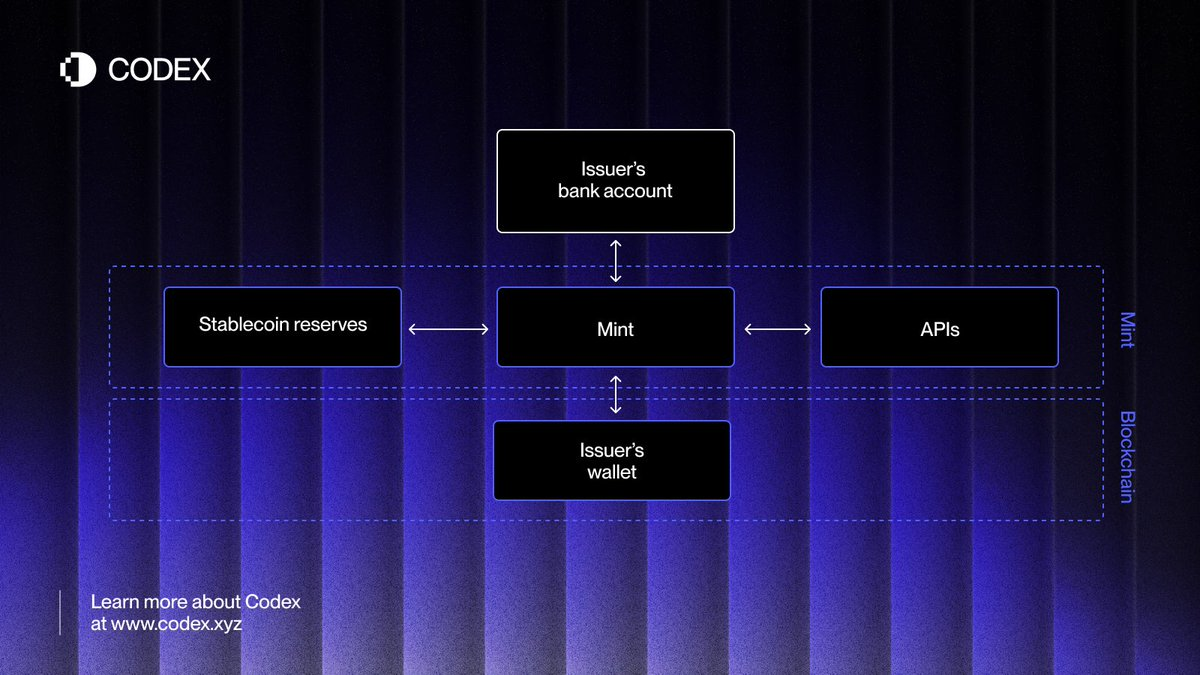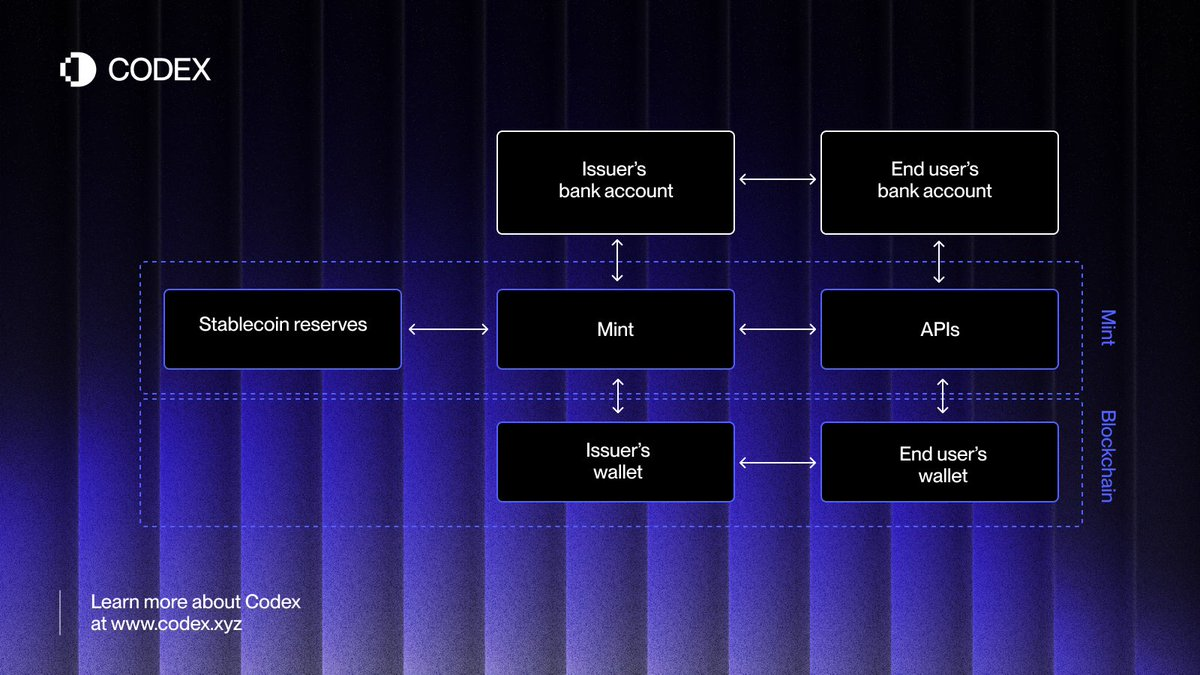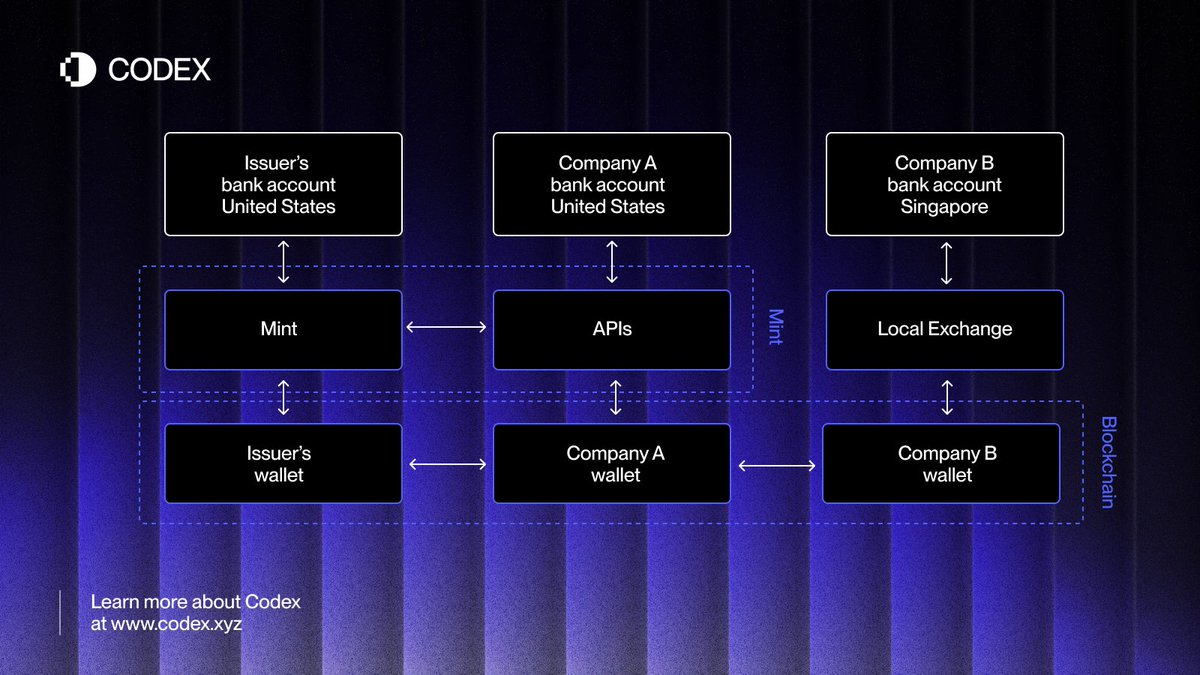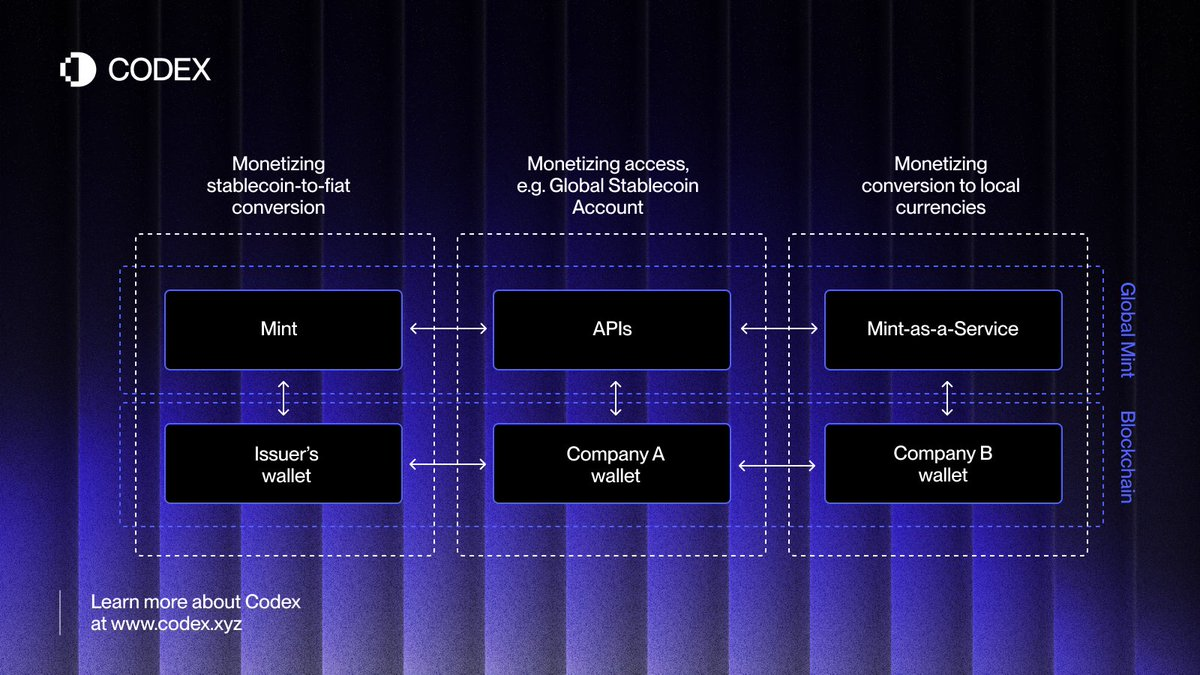The Architecture of Global Stablecoin Issuance
Previously we made the case for issuing purpose-built stablecoins.
The most powerful use case for stablecoins is cross-border payments, such as global merchant payouts, where they can dramatically cut costs and settlement times compared to traditional rails.
Unlocking this potential requires setting up a global Mint, the infrastructure for creating and managing stablecoins across different geographies. Let’s explore what the Mint is and how to enable global access to it.
The Anatomy of a Mint
At the core of any stablecoin issuance is the “Mint,” the infrastructure that powers the entire process. This system enables three core processes:
Minting and burning: This is the foundational process where the stablecoin issuer creates and destroys tokens on the blockchain. This is governed by a smart contract on blockchain and requires a parallel financial infrastructure, including bank accounts to enable fiat pay-ins and pay-outs, and IT systems and APIs to automate the conversion.
Stablecoins are created through a process called minting and destroyed through burning on the blockchain. The issuer of the stablecoin maintains control over the smart contract, thereby ensuring exclusive authority to mint and burn stablecoins.
- Stablecoins maintain their peg to the underlying fiat currency through reserves, typically invested in liquid, short-term financial instruments and managed by an independent and trusted third party. The value of the stablecoins in circulation directly reflects the value of these reserves.

On-ramping and off-ramping: This is the method by which users convert fiat currency into stablecoins, and the reverse. This seamless two-way process is fundamental to the utility of stablecoins, as it enables end users to convert fiat currency into stablecoins.
When a user wants to acquire stablecoins, they simply transfer fiat currency to the issuer and trigger conversion using APIs. The issuer then mints new stablecoins, which are sent directly to the user’s digital wallet. The deposited fiat is then held in reserve and invested to generate a return.
Conversely, to convert stablecoins back to cash, a user transfers their tokens to the issuer. The issuer then burns these tokens, liquidates the necessary reserve assets, and transfers the corresponding fiat amount back to the user.

Global on/off-ramping: This is the third, and most transformative, process. It addresses the critical need for seamless conversion between stablecoins and various fiat currencies across different geographies.
In practice, this means connecting to local payment rails and maintaining bank accounts in each region to support pay-ins and pay-outs, enabling stablecoins to be exchanged into any local currency and back.
This capability is what makes stablecoins a truly attractive proposition for global money movement, directly competing with and often outperforming existing, slow, and expensive cross-border payment rails.
A Blueprint for Global Access
Building a global Mint with local on-ramps and off-ramps is a complex and challenging undertaking. Stablecoin issuers can pursue three main paths to enable this:
Create Regional On/Off-Ramps: This involves opening bank accounts in different geographies and acquiring the necessary licenses. Stablecoin users would deposit fiat into these local bank accounts, and then use the Mint convert fiat into stablecoins.
- This is an operationally challenging and time-consuming approach, but it gives the issuer full control over their minting process in each region.
Partner with Local Crypto Exchanges: This approach involves partnering with local exchanges and market makers in each target country. Stablecoin users would then use these exchanges to convert fiat to stablecoins and stablecoins back to fiat.
- While this strategy expands the issuer’s global reach, it can be expensive due to listing fees, market-making costs, and the complexity of managing relationships with multiple partners.

Use the Mint-as-a-Service model: A more efficient and scalable alternative is to partner with a Mint-as-a-Service provider, such as Codex. In this model, the MaaS provider acts as a trusted local proxy. Stablecoin users in a specific country can transact with the MaaS provider, which then uses the issuer’s core Mint to handle the fiat-to-stablecoin and stablecoin-to-fiat conversions.
- This Mint-as-a-Service model effectively eliminates the high cost and operational complexity of building a global on/off-ramp network from scratch. The high cost of on/off-ramping is often cited as a key bottleneck for stablecoin adoption; the MaaS model directly eliminates this barrier.

Key Strategic Considerations
To successfully implement a global stablecoin issuance strategy, stablecoin issuers must focus on the following key areas:
- Build a Robust Domestic Foundation: Begin by establishing a secure and compliant Mint infrastructure in the primary market. This involves developing and deploying a reliable smart contract, forging partnerships with banks for seamless pay-ins and payouts, appointing an asset manager for reserve management, and building a strong suite of APIs.
- Enable On/Off-Ramps in Strategic Geographies: Identify the key regions where on/off-ramp services are most needed, based on market demand for cross-border payments. Partnering with a MaaS provider is the most effective way to enable local on/off-ramps quickly and affordably.
- Develop a Competitive Pricing Model: Issuers can strategically price their services. While access, minting, burning and FX fees are an option, issuers may choose to subsidize these costs for their customers and instead monetize only through the yield generated from the stablecoin reserves.

Where Do We Go From Here?
There is a significant opportunity for issuers to create purpose-built stablecoins that target specific user niches and use cases. However, the real key to unlocking the power of stablecoins is by making them available on a global scale. Fortunately, issuers don’t have to do this alone.
- Codex blockchain is purpose-built for stablecoins, ensuring predictable transaction costs and native foreign exchange capabilities. Its embedded compliance features reduce risk, providing all the necessary capabilities for building a truly global and compliant issuance platform.
- Complementing this core technology, Codex Avenue provides a “Mint-as-a-Service” solution. This allows issuers to offer local on- and off-ramps to their customers, removing the operational and cost complexity typically associated with managing a global footprint.
- Finally, we collaborate with a network of partners who offer expert support in stablecoin issuance, custody, and compliance.
Disclaimer:
- This article is reprinted from [haonan]. All copyrights belong to the original author [haonan]. If there are objections to this reprint, please contact the Gate Learn team, and they will handle it promptly.
- Liability Disclaimer: The views and opinions expressed in this article are solely those of the author and do not constitute any investment advice.
- Translations of the article into other languages are done by the Gate Learn team. Unless mentioned, copying, distributing, or plagiarizing the translated articles is prohibited.
Related Articles

The Future of Cross-Chain Bridges: Full-Chain Interoperability Becomes Inevitable, Liquidity Bridges Will Decline

Solana Need L2s And Appchains?

Sui: How are users leveraging its speed, security, & scalability?

Navigating the Zero Knowledge Landscape

What is Tronscan and How Can You Use it in 2025?
